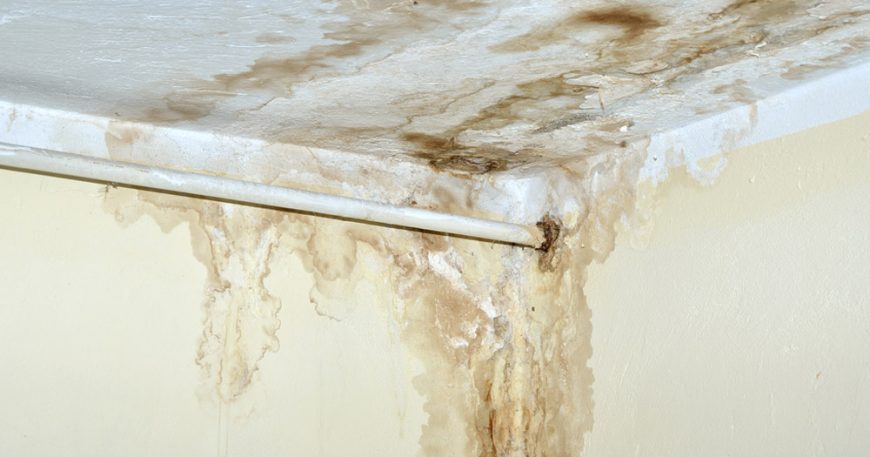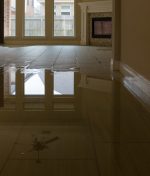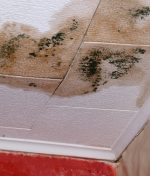What Are the Different Types of Mold Found in Homes and How Dangerous Are They?

- June 16, 2025
- byadmin
- Mold Remediation
Mold is a common but potentially serious issue for homeowners in San Diego and beyond. Often hidden behind walls, under carpets, or inside air ducts, mold can quietly grow after a water leak, flood, or even from daily humidity—especially when not properly ventilated. While not all molds are toxic, some can pose serious health risks to you and your family. At RAMM Water Restoration, we know how overwhelming it can feel to discover mold in your home, which is why we approach every case with care, empathy, and thorough expertise.
We’ll walk you through the most common types of mold found in homes, how to recognize them, and how dangerous they can be.
1. Stachybotrys (Black Mold)
Often referred to as “toxic black mold,” Stachybotrys chartarum is perhaps the most feared type of mold—and for good reason. It thrives in damp, humid areas, especially where there’s been consistent water damage or flooding. It’s typically dark green or black and slimy in texture.
Health Risks:
Black mold produces mycotoxins that can cause severe respiratory issues, chronic fatigue, headaches, skin irritation, and in extreme cases, neurological problems. Infants, the elderly, and people with weakened immune systems are particularly vulnerable.
2. Aspergillus
Aspergillus is one of the most common household molds and comes in a variety of colors including green, yellow, and white. It often grows on walls, insulation, paper products, and even food.
Health Risks:
While some species are relatively harmless, others can cause allergic reactions and lung infections. People with asthma or compromised immunity can develop a condition called aspergillosis, a potentially serious infection.
While some species are relatively harmless, others can cause allergic reactions and lung infections. People with asthma or compromised immunity can develop a condition called aspergillosis, a potentially serious infection.
3. Cladosporium
Unlike some other molds that prefer warm environments, Cladosporium can thrive in both warm and cool areas. It’s often found on fabrics, carpets, wood surfaces, and HVAC ducts. This mold usually appears olive-green to black and has a suede-like texture.
Health Risks:
Cladosporium can trigger asthma symptoms and allergic reactions such as sneezing, watery eyes, and skin rashes. Long-term exposure can lead to chronic respiratory conditions.
Cladosporium can trigger asthma symptoms and allergic reactions such as sneezing, watery eyes, and skin rashes. Long-term exposure can lead to chronic respiratory conditions.
4. Penicillium
This bluish-green mold often grows quickly and can spread easily throughout a home. It’s commonly found on wallpaper, mattresses, and water-damaged furniture.
Health Risks:
Some types of Penicillium are used to produce antibiotics (like penicillin), but the species found indoors can still be problematic. It can cause sinus infections, lung inflammation, and allergic reactions, especially in enclosed or poorly ventilated areas.
Some types of Penicillium are used to produce antibiotics (like penicillin), but the species found indoors can still be problematic. It can cause sinus infections, lung inflammation, and allergic reactions, especially in enclosed or poorly ventilated areas.
5. Alternaria
Alternaria is a fast-growing mold typically found in bathrooms, kitchens, and under sinks. It’s usually dark green or brown with a velvety texture.
Health Risks:
This mold is known to trigger asthma and allergic reactions. It may also cause hypersensitivity reactions in people with pre-existing respiratory conditions.
6. Chaetomium
This mold often appears after severe water damage. It starts as white and eventually turns to gray, brown, or black. Chaetomium is typically found in drywall, wallpaper, and ceilings affected by water leaks.
Health Risks:
Chaetomium is known to cause skin and nail infections. In rare cases, it can cause serious internal infections in immunocompromised individuals. Its musty odor is often a telltale sign of hidden growth.
Chaetomium is known to cause skin and nail infections. In rare cases, it can cause serious internal infections in immunocompromised individuals. Its musty odor is often a telltale sign of hidden growth.
Why Mold Should Never Be Ignored
Even if the mold in your home doesn’t look harmful, it’s essential not to dismiss it. Mold spores can spread quickly and invisibly through your home’s ventilation system, landing on damp surfaces and continuing to grow. Left untreated, it can damage your home’s structure and significantly affect your health.
Ignoring the problem may also reduce your home’s value, lead to costly repairs, and cause complications with insurance claims.
Compassionate Mold Remediation Matters
At RAMM Water Restoration, we believe in handling every mold situation with more than just technical expertise—we lead with compassion. We understand how upsetting it can be to find mold in your home and how stressful the cleanup process can feel. That’s why our team treats your property like it’s our own, walking you through every step, communicating clearly, and working quickly but carefully to restore your space.
We don’t just aim to “remove mold”—we strive to restore your peace of mind.
How we can help
If you suspect mold in your San Diego home—or you’ve recently experienced a flood or water damage—don’t wait. At RAMM Water Restoration, we provide prompt, professional, and compassionate mold remediation services. From thorough inspections to complete removal and prevention guidance, our team is here to support you every step of the way.
We take pride in being friendly, responsive, and respectful. When you call us, you’re not just getting a restoration crew—you’re gaining a team that genuinely cares about your health, your home, and your peace of mind.
Let RAMM Water Restoration help bring safety and comfort back to your space. Reach out today for a free consultation.
Categories
Recent Posts
How Hard Water Issues Can Lead to Plumbing Leaks in San Diego Homes
December 12, 2025
Understanding the Difference Between Flood Damage and Water Damage
December 12, 2025
How to Spot Water Damage in Ceilings Before It Gets Worse
December 12, 2025









